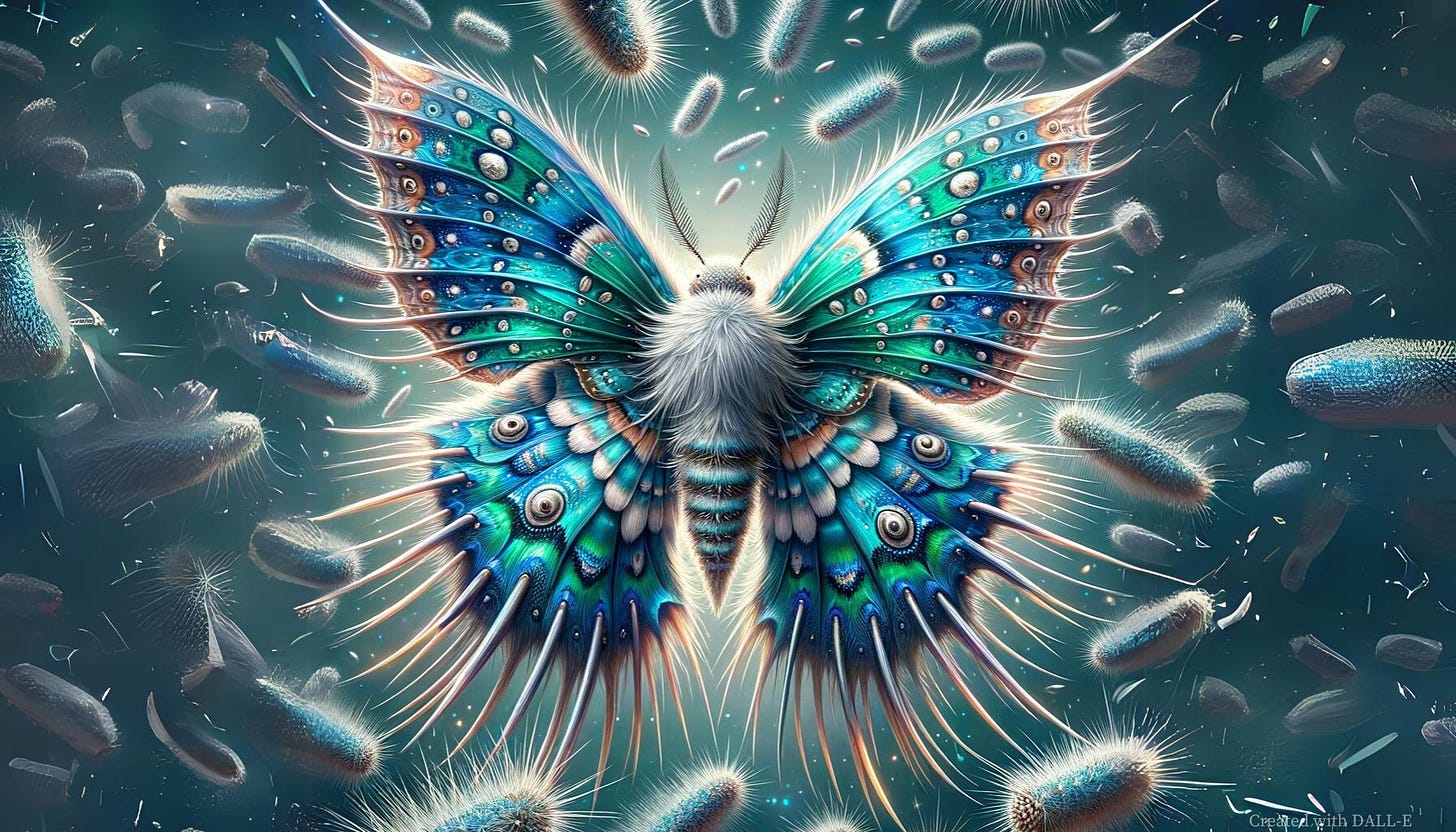📗Compendium | 7: Quillmoth
by Acclaimed Interstellar Survival-Exploration Entrepreneur and Nature Documentarian Sir Davis Astenbarrow
This is Hanlon’s Reader, an independent author’s publication. Here you’ll find stories, books, essays, and other things. I’ll be tinkering away here for a while.
If you’re using a web browser to read, you can use these links to help find your way:
📗Short Stories | 📘Books | 📙Personal Essays | 💌Newsletter | ❓About | 🏡Home
App Users: the categorized Tag links above don’t work in-app, so you may find it easier to use the Content Calendar or direct links to story posts to navigate my publication.
📗A Compendium of Beasts, Bugs, and Botany
1 | 2 | 3 | 4 | 5 | 6 | 7 | 8 | 9 | 10
📗A Compendium of Beasts, Bugs, and Botany
The Explorer’s Guide to Surface Life
Quillmoth
Explorer’s Guide Contribution Written By Acclaimed Interstellar Survival-Exploration Entrepreneur and Nature Documentarian Sir Davis Astenbarrow

Nature is an unforgiving maelstrom of sex and death, a cyclical dance of strange missteps and near-impossibilities. Life on Surface is no exception, with the Quillmoth’s beautiful brutality a perfect illustration of the grim bargains which often must be struck for a species’ survival.
Having successfully engorged itself, a Quillworm must quickly seek shelter in whatever short distance it can cover—or simply pupate on the spot, sometimes even choosing to cling to a larger victim using its barbs and spin a hasty cocoon attached to the host’s body. This is, of course, usually fatal for the victim. Due to the anesthetic barbs, prey often do not notice the presence of a worm until it’s too late, if at all.
From this point, the sticky webbing used to spin its cocoon hardens into a protective shell that allows the metamorphosis to begin… unless the poor creature has fed on human blood.
Ironically, when Quillworms do manage to feed on humans, they cannot digest our alien blood. Study is ongoing, but some excellent new research from Overlook University’s School of Xenobiology indicates that certain enzymes in human blood react poorly with the creatures’ silk-like webbing, preventing their cocoons from properly hardening as they normally would after feeding on typical Surface fauna. This leads to holes, tears, and other deformities during metamorphosis which can cause disease, desiccation, or otherwise prevent a Quillmoth from fully maturing.
This is thankfully a rare, if downright horrific, occurrence!

Yet even a successfully, safely cocooned pupa’s journey to reproduction, bearing harsh witness to the furious poetry of Nature, has only just begun…
Each one has a single day to live. Until pupation, it is neither male nor female; then, while encased, the larval body dissolves completely and gradually transforms into its adult body. A nutrient-packed, incubatory sludge rearranges itself into a compact, furl-winged new self. While females mature with their needles intact and simply tear their way out, males must free themselves from chrysalis using chemical secretions to first weaken the lining and then escape using their larger, more powerful wings.
This delay gives the females time to fully dry their new wings before flight, allowing them to find ideal nesting locations before the males begin their pursuit. Once the fated lovers meet at last, the dazzling flurry of mating begins. Males will tear themselves to pieces in order to copulate, often engaging in desperate aerial battles by bashing each other against the nearest female’s shredding barbs.
Such mating displays kick up a brilliant multicolored cloud created by the damaged Quillmoths’ millions of tiny, dust-like scales. By day’s end, the cycle completes with the females—and any surviving males—guarding until death the clutches of eggs containing their next generation.
Captured from the internal monologue of Harvester Wes Jackson:
My self slipped away in a red haze. I fought to keep afloat, gasping heavily, and felt myself go under. In my dream state I saw a faraway figure in dark armor, shining with wavering light off in the distance. Like looking at someone from underwater. I was sure they wouldn’t hear me from there. Too much strain. Seemed stressful. The current was pulling me along, to gentle, gentle warmth and comfort.
Like powder in water, I dissolved into the universe.
📗Short Stories | 📘Books | 📙Personal Essays | 💌Newsletter | ❓About | 🏡Home








